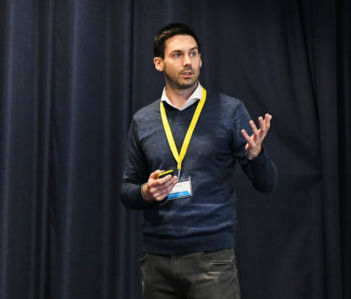A moment that changes everything: Why young driver safety must matter more
- Rebecca Morris
- Jul 11
- 4 min read
Updated: Jul 24

By Dr Neale Kinnear, Chartered Psychologist in the study of human behaviour and transport
“My heart is broken and nothing in this life will ever mend it. I feel a physical pain
when I see her photograph or when a memory comes to mind or when I see a little girl
with bunches in her hair. I know I was lucky to have a daughter like Margaret but then
I knew that when she was alive.” - Elizabeth Davidson, victim impact statement
Few words capture the impact of road trauma like those of Elizabeth Davidson. Her
daughter, Margaret, a newly qualified doctor, was killed on her way home from hospital
after a shift. She was hit by a young driver who was speeding and overtaking dangerously ona rural A road.
It is such a waste
When Elizabeth read her statement aloud in court, it moved the judge to tears. I’ve used her words many times in presentations, LinkedIn posts and in my PhD thesis, because they
reflect not only the emotional devastation of road death, but also the preventable waste of life, potential and contribution to society.
Margaret was just 26. Loved, nurtured, and educated over those 26 years, she was at the
beginning of a life that would have given so much back - as a doctor, as a friend, as a citizen.
The patients she could have helped. The family, friends and colleagues she would have
enjoyed life with. The children she might have had. The investment in her education would
have paid dividends for decades to come. All of it lost in a single moment - one she could
not have predicted, and one that is sadly all too common.
A well-known pattern
Of all the crash statistics on young drivers, one continues to stand out: in collisions involving a young driver aged 17 to 24, 72% of those killed or seriously injured are not the young driver themselves. They are passengers or other road users. People like Margaret. People like you or me.
Young drivers are involved in around 20% of all injury crashes, despite representing a
smaller proportion of drivers overall. This isn’t a new trend. The pattern has persisted for
decades, not just in Great Britain, but around the world. And yet, we’ve been slow to act on what we know works.
Managing the risk
There are no simple answers in road safety. The road network is a complex system - risk is
always present and can’t be entirely engineered away. But we can manage it, particularly
when we know where the greatest risks lie. This was the approach researchers in the US
took in the late-1970s and early-80s when studying the risks associated with young and
novice drivers.
Recognising that these drivers are vulnerable due to both age and inexperience, they recommended a staged approach to licensing: gradually introducing young drivers to riskier situations like driving at night or when carrying peer-aged passengers.
It’s a simple concept based on reducing exposure to the most dangerous scenarios when
first licensed, while allowing drivers to build experience in safer conditions. The approach
was commonly referred to as Graduated Driver Licensing (GDL). It’s logical, evidence-based, and, where implemented, it has worked, consistently. When I began research into this area over 20 years ago, evaluations were being published from states and countries that had adopted GDL around the world. Each one reported major reductions in crashes and fatalities. A Cochrane Review in 2011 described the evidence as “indisputable.”
Considered but not considered
GDL was considered in Great Britain in the early 2000s, but despite predicted casualty
savings, was rejected. In 2012, while at the Transport Research Laboratory (TRL), I led a review for the Department for Transport examining how to improve young driver safety.
The evidence was overwhelming, and our recommendation was clear: implement a progressive licensing system that strengthens the existing New Drivers Act and supports life-long learning. We predicted basic improvements could prevent around 4,000 casualties and save £200 million a year. But no policy change followed.
As we sit in 2025, the case for GDL is as strong as ever. Other countries have continued to
refine and strengthen their approaches, while Great Britain has fallen behind. In the
meantime, families continue to lose loved ones – then find out that there are proven
measures that could have made a difference. For many, grief turns into advocacy. Their
voices, once isolated, are growing louder. They deserve to be heard.
Personal reflection
As a parent, I often hold my young children and feel that intense instinct to protect. I know
one day they’ll be out in the world on their own, and all I can do is help prepare them to
face its risks with care and confidence. I imagine Elizabeth Davidson did the same for
Margaret. Margaret couldn’t have done anything about that moment, nor was she simply
“unlucky”. Her story is part of a larger pattern - one we understand, one we’ve documented for decades, and one that we have the tools to change.
We need to stop treating these tragedies as inevitable. We must use the evidence we have,
implement the policies we know work and do more to protect both young people and the
public. The time to act was years ago. The next best time is now.


